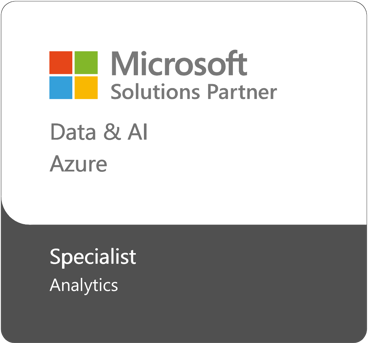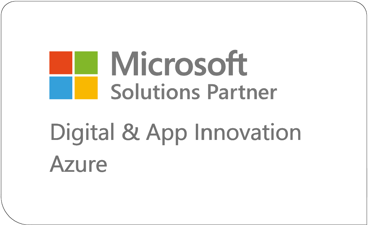Quick Guide to B2B Marketing Segmentation
In this quick guide to B2B marketing segmentation, you’ll learn what it is, why it matters, and how to get the most out of it.

You can’t reach the right customers if you don’t know who they are. That’s where marketing segmentation comes in.
In this quick guide, we’ll explore what marketing segmentation is within B2B marketing, how to segment a B2B audience, and how to maximise your marketing segmentation efforts.
What Is Marketing Segmentation Within B2B Marketing?
Marketing segmentation refers to the process of putting customers in groups based on shared characteristics.
Why would you use it within B2B marketing? Within the B2B field, there are a wide variety of roles, and marketers cannot possibly target all of them – they need to focus their efforts on audiences who are most likely to buy their products. Specifically, they need to understand the audiences that are easiest to work with and who have the greatest interest in what the marketers are selling.
Marketing Segmentation: Getting to Know Your Most Valuable Customers
The customers that are easiest to work with and who have the greatest interest in what you’re selling are your most valuable customers (insert link to Easy as PIE). It’s crucial that you understand who your most valuable customers are, so you can target them effectively.
Not all of your customers are valuable. The ones that don’t see your value, argue with you over everything, and constantly ask for discounts for your products or services are not valuable. Don’t focus your energies on marketing to them – you want to keep the ones who are worth retaining.
What Does Marketing Segmentation Look Like?
B2B segmentation involves dividing customers into groups. Those groups are based on shared characteristics as well as the likelihood that they’d benefit from the same experiences.
Here are some examples of marketing segmentation:
- Audience types
- Where they are in their customer journey
Product or service category - Industries
- Personas
Making the Most of Your B2B Segmentation Process: Targeting the Most Valuable Segments
As we mentioned earlier, marketing segmentation allows you to get to know your most valuable customers, so you can target them. Yet, how do you figure out who your most valuable customers are, aside from anecdotal evidence?
There are three principles that help you get the most out of your B2B segmentation process:
- Potential
- Importance
- Ease
Potential
There are two ways to look at the term ‘potential’:
- There’s potential to increase visitor engagement if this segment is targeted with personalised marketing content
- There’s a potential return on investment if you target the segment with personalised marketing content
Essentially, a specific segment is valuable if members are very likely to visit your digital properties, very likely to buy from you, and you’ll see a high ROI as a result of targeting that segment.

Importance
‘Importance’ refers to how many customers are in a given segment. The bigger a segment is, the more important it likely is.
For example, a segment of 100 customers is more important than a segment of 12 customers, because there’s more purchasing power in the first segment.
Ease
When we talk about ‘ease,’ we’re looking at how easy it is to classify someone in a given segment.
We’ll use another example. Let’s say Anne is a CIO at a midsized company. She doesn’t have a huge staff, so she winds up doing most of her own research when it comes to choosing new technologies. Because Anne consumes content in the marketing funnel that’s clearly meant for CIOs, it’s easy to classify her as such.
What Do You Do Once You’ve Carried out B2B Segmentation?
Let’s say you’ve put your B2B customers into segments. What’s the next step?
You want to offer those customers a personalised experience, so that customers feel valued, and they want to continue working with you. Here are the top steps to personalising the customer experience:
- Nurture your customers
- Utilise location-based personalisation
- Ensure your marketing channels have a cohesive strategy
Nurture Your Customers
‘Nurturing your customers’ means that you’re giving customers a highly personalised experience. What does a highly personalised experience look like?
It means that you’re personalising content correctly – it goes beyond just putting someone’s first name in the salutation in an email. You understand what an individual wants based on previous interactions and purchase history. For example, if you know someone has visited your site numerous times, you would configure settings to ensure that the pop-up window for newsletter signup doesn’t appear.
Utilise Location-Based Personalisation
Location-based personalisation is based on the idea that marketers can personalise messages to customers according to their physical location. How does this work for B2B customers?
Let’s say a software firm puts on a conference, and it knows that its most valuable customer segments will be in attendance. With that knowledge, the company could send attendees from those segments a free, relevant eBook after they go to certain sessions. As a result, attendees feel as though they’ve gotten something of value from this conference, and they’ll want to continue working with the software company because it’s shown it appreciates their business.
Ensure a Cohesive Marketing Strategy across All Channels
Another way to get the most out of your marketing segmentation efforts is to make sure that you’ve got a cohesive marketing strategy across all of your channels. What does that mean?
A cohesive marketing strategy means that all of your marketing messages are consistent across platforms. You don’t offer a customer something on LinkedIn, only to provide an even better offer on Facebook a few minutes later. There’s no confusion about what you stand for – it’s abundantly clear, and all of your customers understand it. Moreover, all of your marketing communications have a consistent look at feel; the colour scheme and typography are all the same.
Enlighten Designs: Helping You with B2B Segmentation for Better Marketing Results
For over two decades, Enlighten Designs has been delivering delightful digital experiences to its clients. Our expertise and knowledge of data and marketing segmentation enable us to better target customers and reach groups that are most valuable to your organisation. To learn more about B2B marketing segmentation and how to implement it at your business, contact us.



